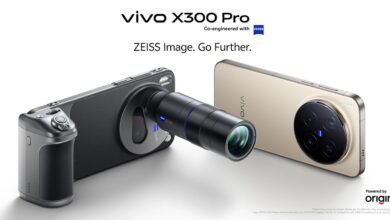
Walk into any phone shop in Kenya today and you’ll notice right away that smartphones are no longer the “cheap thrill” they used to be. In fact, the average selling price (ASP) of a smartphone in Kenya has nearly tripled since 2019, climbing from KES 5,955 to a hefty KES 18,979 by Q2 2025.
That’s not just a casual price bump; it’s a full-blown transformation in how Kenyans buy, afford, and even think about their phones, as documented in a Canalys report on financing the future of smartphone access in Kenya’s informal economy from earlier this month.
Why are smartphones suddenly so expensive in Kenya?
A cocktail of factors has driven this surge:
- The Kenyan shilling has been under pressure.
- Import duties and global component prices keep creeping up.
- Grey imports, once the “affordable shortcut” for many, have been squeezed out.
The result? Fewer true budget devices. Smartphones under $100 (KES 13,000) now account for just 32% of shipments. Meanwhile, mid-tier models priced between $100–$199 (KES 13,000-KES 26,000) dominate more than half the market. The budget phone you’re eyeing today would have been a mid-ranger five years ago.
Kenyans are fighting back through financing
Despite rising costs, demand for smartphones hasn’t dipped. Instead, Kenya has embraced financing-led upgrades even with all the downsides BNPL services come with.
Traditional postpaid contracts don’t make sense in a country where more than 80% of the workforce earns daily or weekly wages. The winning formula? Micro-payments of KES 30 to 100 per day. Add device-lock technology and mobile money (M-PESA, Airtel Money), and suddenly smartphones are within reach for millions who once felt excluded.
This isn’t just about owning the latest phone. Financing is helping farmers access weather apps, shopkeepers accept cashless payments, and students learn online. In other words, smartphone financing equals digital inclusion.
It may sound simple: get a phone, pay in small daily bites. But behind that model is an ecosystem of:
- Secure locks that enforce payments,
- Dynamic credit rules that learn from your habits,
- Real-time mobile money integrations, and
- Behavioral nudges to keep you on track.
Distributors like Redington, Guree, and Mitsumi keep phones flowing, while players like M-KOPA, Watu Simu, Safaricom, and Airtel stitch together the financing and payment systems. It’s a whole village making sure you can scroll TikTok every night.
The world is paying attention to Kenya’s smartphone financing success
Kenya’s smartphone financing success is now seen as a blueprint for emerging markets. It proves that high prices don’t have to lock people out of the digital economy if financing models fit local realities.
For vendors, it means growth without slashing prices. For fintechs, it opens doors to new credit ecosystems. For telcos, it deepens customer loyalty. And for everyday Kenyans? It means moving past the limitations of feature phones and fully participating in the digital world.
Smartphones in Kenya may be three times pricier than they were six years ago, but instead of slowing adoption, this shift has powered a financing revolution. Daily KES 50 plans have turned smartphones from a luxury into an accessible gateway to education, healthcare, finance, and opportunity.
In short: phones cost more, but thanks to creative financing, more Kenyans than ever are getting connected.







